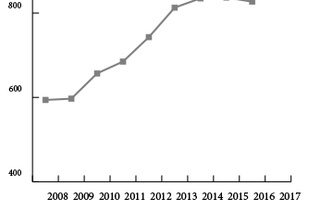This report is based on two official visits by the Committee to the Graduate School of Design: on May 27th and 28th, 1975, and on April 16th, 1976. In addition, individual members of the Committee have visited the School of many separate occasions.
PURPOSE OF THE REPORT
There appears to be some confusion about the purpose of the Committee to Visit the Graduate School of Design and the significance of its report. In our view, we are to evaluate the effectiveness of the School in preparing design and planning professionals for both their present and future roles, and we should make policy recommendations based on our knowledge of the four professions (architecture, city and regional planning, urban design and landscape architecture), the context in which they operate, and the practice at other educational institutions.
A PREJUDICE: THE SCHOOL SHOULD BE PRE-EMINENT
The Committee does have one important prejudice which we articulate immediately. We believe that the Harvard Graduate School of Design should be one of the leading educational institutions in its field. In 1937, when architectural and planning education had reached a dead end, Harvard led the way out of the impasse by introducing modern architectural and planning theories to replace an outworn historicism. For many years thereafter, the Harvard Graduate School of Design was pre-eminent. It is this high standard that we have used in evaluating the performance of the School today. We believe that the School should hold a position comparable to that of the University as a whole, and of such professional schools as those of Law, Medicine, and Business.
SOME RECENT HISTORY
We are aware that the last decade has been a difficult time for education, and particularly for education in the design and planning professions. The Committee is deeply appreciative of the valuable service performed by Dean Kilbridge in setting the School back on a sound financial basis and guiding it through a difficult, transitional time. Members of the Committee went through these years with Dean Kilbridge and they understand what the problems were and what he has accomplished. The Dean himself has made several statements indicating that the School, having returned to a sounder footing, must take up some new initiatives. We agree.
A DEFINITION OF PRE-EMINENCE; GSD NOT PRE-EMINENT
The crisis of the cities and the problems of the environment are two of the most important issues confronting our country, and they are of comparable significance in other developed, or developing, nations. All four of the professions represented at the School are trying to come to terms with elements of these issues and devise new and effective solutions to these problems. A measure of pre-eminence is the degree to which the School can take a leadership role in showing people how to solve urban and environmental problems, whether by buildings, large scale designs, government programs, relationships between government and business, ecological measures or whatever.
We have asked ourselves to what extent graduates of the GSD are prepared to work effectively in these areas, now and in the future, and to what extent the School is known as a source of authoritative information and innovative techniques relating to design and the urban and natural environment.
It is our conclusion that the School, measured by this standard, has a long way to go to achieve a pre-eminent position.
ROLE OF PROFESSIONALISM AS SOURCE OF INNOVATION
We believe that the GSD has failed to recognize that the "leading edge" of knowledge in the four professions taught at the School is in the area of implementation; the theory comes from the practice, and not the other way around. We do not discount the importance of research based on observation and evaluation, particularly in city and regional planning; however, a correct definition of a problem is not necessarily, even half of the solution. The solution inevitably requires some actual step to be taken: a building built, a zoning ordinance passed, a highway constructed, a housing subsidy program enacted, and so on. Theoretical investigations divorced from implementation will lead nowhere.
Recognition that innovations in practice supply the key to new theories leads to three educational policies.
1. Professionals being educated at the GSD should master the basic elements of their field as early as possible in the educational process.
Read more in Opinion
Justice for the PalestiniansRecommended Articles
-
Design Faculty Votes To Increase Admissions From Minority GroupsThe faculty of the Graduate School of Design has approved measures to intensify recruitment of qualified students and professors from
-
Interim Design Dean Will Remain in PostUniversity President Lawrence H. Summers announced Wednesday that Alan A. Altshuler, who was elected interim dean of the Graduate School
-
Architects, Urban Planners Address Racial Tensions in St. LouisThe Graduate School of Design kicked off a three-day event with keynote speeches that focused on racial justice in St. Louis, Mo., a continuation of a series addressing design, space, and social justice at the school.
-
 Graduate School of Design's Enrollment Soars Skyward
Graduate School of Design's Enrollment Soars Skyward -
Obama to Appoint Two Design Professors to Federal CommissionPresident Barack Obama intends to appoint Graduate School of Design professors Toni L. Griffin and Alex Krieger to the U.S. Commission of Fine Arts.













